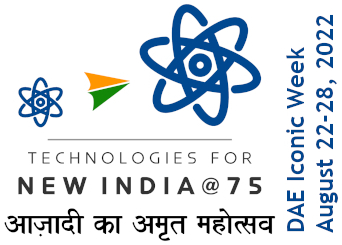Exploration of the Aggregate Induced Non-Emissive-to-Emissive Switching of Molecular Platinum-Thiol Cluster (Nanoscale Publication)
Aggregation Induced Emission (AIE), a countermand phenomenon to Aggregation Caused Quenching (ACQ), has been explored in various areas such as biosensors, liquid crystals, etc by different research group including our Nanophotonics Laboratory (SINP) in Collaboration with Mandal Research Group (IISER-TVM: PI) and Datta Group (IACS). For a wide variety of practical applications, luminophores are used in their solid state by taking the advantage of the AIE effect. Although the initial studies of AIE were devoted to organic fluorophores only, the concept of AIE was recently implemented in thiolate protected metal NCs, metal complexes, etc. Unlike organic fluorophores, the reason behind AIE from the thiolate metal NCs can be correlated to the metallophilic interaction in addition to the restricted motion of the capping ligands. The discovery of AIE in thiolate metal NCs provide a new avenue for promising luminescent probes in various applications. This offers us an exciting inspiration to explore the AIE performance of as-synthesized water soluble glutathione (GSH) stabilized platinum clusters (Pt-SG) as shown in Fig. 1 a). These clusters are non-emissive in aqueous medium however red emission is shown in the solid state. The emission quantum yield (QY) of the Pt-SG cluster was measured in the solid state using an absolute method and the value was found to be 2.5%.This

shows a huge Stokes shift >250 nm Fig. 1b). AIE property of the cluster is confirmed by doing controlled experiments as shown in Fig. 1 c) and Fig. 1d).

Figure 1. (a) Synthesis procedure for Pt-SG cluster, (b) emission spectra of the Pt-SG cluster in the solid state and the corresponding photograph in solid and solution states under visible and UV light, (c) variation of PL intensity and PL spectra with Ethanol: H2O ratio (inset shows degree of enhancement), and (d) photograph of aqueous solution of Pt-SG clusters under visible and UV light.
Zeta potential of the Pt-SG clusteras a function of varying ethanol volume fraction in the mixed solution and by Temperature dependent emission spectra of the aqueous Pt-SG cluster as shown in Fig.2 is the evidence for aggregation of this cluster is caused by inter-cluster interaction.


Figure 2. (a) Zeta potential curve as a function of ethanol concentration, and (b) Temperature dependent emission studies, where the inset shows the exponential decay of the luminescence intensity on increasing temperature of platinum cluster in aqueous medium.
Along with the emission intensity, the emission lifetime also increases from 26 ns to 81 ns as we increase the percentage of ethanol from 50% to 100% in the solution mixture. This also follows a single exponential decay as shown in Fig. 3a). As the lifetime is much less than 1 μs, it rules out the possibility of relaxation through a triplet metal-centered state and delayed fluorescence. Pt-SG clusters are soluble in water and exist as monomers, which are non-emissive, while the clusters aggregate in non-polar solvents to form emissive cluster-assembled materials. Theoretical calculation shed a light on this unusual behavior of platinum cluster, which states that aggregation triggers a distinct change in the frontier molecular orbitals (FMOs) from metal d-orbital centered FMOs in the monomer to metal–thiolate and thiolate centered FMOs in the dimer improving the radiative decay process as shown in Fig. 3b.

Figure 3. (a) Left: emission decay for the ethanol induced aggregate, Right: a plot of the QY vs. different percentage of ethanol. (b) Molecular orbitals involved during transitions for (a) Pt5(SCH3)10, (b) Pt6(SCH3)12, and (c) dimeric Pt6(SCH3)12 clusters. (c) Table showing the computed bond lengths (Å) of Pt–Pt and Pt–S thiolate of Pt5(SCH3)10 and Pt6(SCH3)12 clusters in the ground and first excited states.
The theoretical prediction was strengthened by solvent dependent photoluminescence studies where Lewis-acidic environment can significantly perturbed the metal-thiolate and thiolate centered FMOs, as shown in Fig. 4. The effort of theoretical calculation and photophysical studies underscore the non-emissive to emissive switching between monomer and aggregated states of Pt-SG clusters. The origin of PL and, thus, the control of AIE in these Pt–thiol nanoclusters were established through in-depth computational and experimental work. This work reports the aggregation induced emission in Pt-thiol nanoclusters for the first time. Based on the unique property (AIE –OFF-ON) is being utilized for the various application such as trace water detection in dry solvent, temperature sensor, semiconducting nature along with minimum reabsorption probability lead to future application like solar concentrator.

Figure 4. Emission response of an aqueous solution of Pt-SG clusters on the addition of different a) protic solvents and b) aprotic solvents respectively.
The AIE-OFF-ON property of the cluster utilized for various application as shown below.
2. Platinum cluster based trace water and temperature sensor

3. Platinum cluster for future LED application

The theoretical prediction was strengthened by solvent dependent photoluminescence studies where Lewis-acidic environment can significantly perturbed the metal-thiolate and thiolate centered FMOs, as shown in Fig. 4. The effort of theoretical calculation and photophysical studies underscore the non-emissive to emissive switching between monomer and aggregated states of Pt-SG clusters. The origin of PL and, thus, the control of AIE in these Pt–thiol nanoclusters were established through in-depth computational and experimental work. This work reports the aggregation induced emission in Pt-thiol nanoclusters for the first time. Based on the unique property (AIE –OFF-ON) is being utilized for the various application such as trace water detection in dry solvent, temperature sensor, semiconducting nature along with minimum reabsorption probability lead to future application like solar concentrator.

Figure 4. Emission response of an aqueous solution of Pt-SG clusters on the addition of different a) protic solvents and b) aprotic solvents respectively.
The AIE-OFF-ON property of the cluster utilized for various application as shown below.
- Bio-composite film as volatile acid-base sensor

2. Platinum cluster based trace water and temperature sensor

3. Platinum cluster for future LED application





